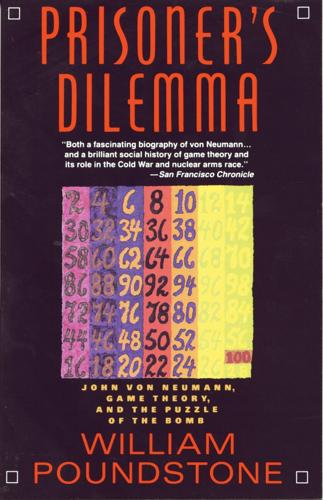
Prisoner's Dilemma: John Von Neumann, Game Theory, and the Puzzle of the Bomb
by
William Poundstone
Published 2 Jan 1993
I really love you, and, within the limitations of my horrible nature, I do want to make you happy—as nearly as possible, as much of the time as possible.” What was the horrible nature? In an interview with journalist Steve J. Heims (in John Von Neumann and Norbert Wiener: From Mathematics to the Technologies of Life and Death, 1980), Eugene Wigner asserted that “Johnny believed in having sex, in pleasure, but not in emotional attachment. He was interested in immediate pleasures but had little comprehension of emotions in relationships and mostly saw women in terms of their bodies.” Wigner suggested that von Neumann’s real love was his mother.
…
In General Systems (1966) 11:203–14. Haldeman, H. R., with Joseph DiMona. The Ends of Power. New York: Times Books, 1978. Halmos, Paul. “The Legend of John von Neumann.” In American Mathematical Monthly 80, no. 4 (April 1973): 382–94. Heims, Steve J. John von Neumann and Norbert Wiener: From Mathematics to the Technologies of Life and Death. Cambridge, Mass.: MIT Press, 1980. Hobbes, Thomas. Leviathan. New York: Macmillan, 1958. Hofstadter, Douglas. Metamagical Themas: Questing for the Essence of Mind and Pattern. New York: Basic Books, 1985. Kahn, Herman. On Escalation: Metaphors and Scenarios. New York: Praeger, 1965. ______.

How Not to Network a Nation: The Uneasy History of the Soviet Internet (Information Policy)
by
Benjamin Peters
Published 2 Jun 2016
Kay, “Cybernetics, Information, Life: The Emergence of Scriptural Representations of Heredity,” Configurations 5 (1) (1997): 23–91.Books on the cybernetic context before and during the U.S. cold war include Edwards, The Closed World; David Mindell, Between Human and Machine: Feedback, Control, and Computing before Cybernetics (Baltimore: John Hopkins Press, 2002); Jennifer Light, From Warfare to Welfare: Defense Intellectuals and Urban Problems in Cold War America (Baltimore: Johns Hopkins University Press, 2003); and Darren Tofts, Annemarie Jonson, and Alessio Cavallaro, eds., Prefiguring Cyberculture: An Intellectual History (Cambridge: MIT Press, 2002).A few biographical works include Steve J. Heims, The Cybernetics Group (Cambridge: MIT Press, 1991); Steve J. Heims, John von Neumann and Norbert Wiener: From Mathematics to the Technologies of Life and Death (Cambridge: MIT Press, 1982); Pesi R. Masani, Norbert Wiener, 1894–1964 (Boston: Birkhäuser Verlag, 1990); Flow Conway and Jim Siegelman, Dark Hero of the Information Age: In Search of Norbert Wiener, the Father of Cybernetics (New York: Basic Books, 2005); and Hunter Crowther-Heyck, Herbert A.
…
Chicago: University of Chicago, 1969. Heidegger, Martin. The Question concerning Technology and Other Essays. Translated by William Lovitt. New York: Harper & Row, [1954] 1977. Heims, Steve J. The Cybernetics Group. Cambridge: MIT Press, 1991. Heims, Steve J. John von Neumann and Norbert Wiener: From Mathematics to the Technologies of Life and Death. Cambridge: MIT Press, 1982. Hobsbawm, Eric. The Age of Extremes: A History of the World, 1914–1991. New York: Pantheon Books, 1994. Hobsbawm, Eric. How to Change the World: Reflections on Marx and Marxism. New Haven: Yale University Press, 2011. Hoffmann, David E. The Dead Hand: The Untold Story of the Cold War Arms Race and Its Dangerous Legacy.
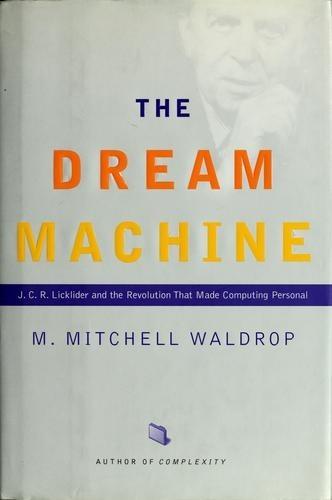
The Dream Machine: J.C.R. Licklider and the Revolution That Made Computing Personal
by
M. Mitchell Waldrop
Published 14 Apr 2001
Miller, "Stanley Smith Stevens, 1906-1973," In Bzographical Memoirs, vol. 47 (Washing- ton, D.C.: National Academy of Sciences, 1975). 3. Ibid. 4. Ibid. 5. Ibid. 6. George A. Miller, "J. C. R. Licklider, Psychologist" (unpublished address given before the Acousti- cal Society of America, 1 991). 7. Steve Heims, John von Neumann and Norbert Wiener: From Mathematics to the Technologies of Life and Death (Cambridge, Mass.: MIT Press, 1980), 379. 8. Jerome B. Wiesner, "The Communications Sciences-Those Early Days," in R. L. E.: 1946+20 (Cambridge, Mass.: Research Laboratory for Electronics, MIT, 1966), 13. 9. Pesi R. Masanl, Norbert Wiener (Basel: Blfkhauser, 1990), 16. 10.
…
Tropp, "Ongln of the Term Bit," Annals of the H15tory of Computing 6 (1984). 3. Jerome B. Wiesner, "The Communications Sciences-Those Early Days," in R.L.E.: 1946+20 (Cambridge, Mass.: Research Laboratory for Electronics, MIT, 1966), 12. 4. Steve Helms, John von Neumann and Norbert Wiener: From Mathematics to the Technologies of Life and Death (Cambridge, Mass.: MIT Press, 1980), 206. 5. Norbert Wiener, Cybernetics, or Control and CommunicatiOn in the Animal and the Machine, 2d ed. (Cambndge, Mass.: MIT Press, 1961),23. 6. Heims, Von Neumann/Wiener, 189. 7. Norbert Wiener, "A Scientist Rebels," Atlantic Monthly, January 1947, and Bulletin of the Atomic Sci- entlSts, January 1947. 8.
…
Turing, "Computing Machinery and Intelligence," Mind 59, no. 236 (1950). Repnnted In The Mind's I: Fantasies and ReflectiOns on Self & Soul, ed. Douglas R. Hofstadter and Daniel C. Den- nett (New York: BasIC Books, 1981), 53-67. 15. Ibid. 16. QIoted In Steve Heims, John von Neumann and Norbert Wiener: From Mathematics to the Technologies of Life and Death (Cambridge, Mass.: MIT Press, 1980), 276. 17. QIoted ibid., 370. 18. QIoted ibid. 19. QIoted ibid., 371. 20. George A. Miller, "The MagICal Number Seven, Plus or Minus Two: Some Limits on Our Capac- ity for Processing Information," Psychological Review 63, no. 2 (1956): 81; http://www.well.com/user/ smalin/ miller.html. 21.
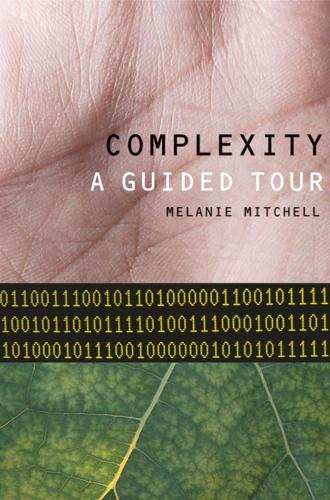
Complexity: A Guided Tour
by
Melanie Mitchell
Published 31 Mar 2009
For an account of self-replication in DNA and how it relates to mathematical logic and self-copying computer programs, see Hofstadter, D. R., Gödel, Escher, Bach: an Eternal Golden Braid. New York: Basic Books, 1979, pp. 495–548. “reproductive potentialities of the machines of the future’ ”: Quoted in Heims, S. J., John Von Neumann and Norbert Wiener: From Mathematics to the Technologies of Life and Death. Cambridge, MA: MIT Press, 1980, pp. 212–213. “their respective nonfiction”: Kurzweil, R., The Age of Spiritual Machines: When Computers Exceed Human Intelligence. New York: Viking, 1999; and Moravec, H., Robot: Mere Machine to Transcendent Mind. New York: Oxford University Press, 1999.
…
SLACER: A Self-Organizing Protocol for Coordination in Peer-to-Peer Networks. IEEE Intelligent Systems, 21(2), 2006, pp. 29–35. Hardin, G. The tragedy of the commons. Science, 162, 1968, pp. 1243–1248. Heims, S. The Cybernetics Group. Cambridge, MA: MIT Press, 1991. Heims, S. J. John von Neumann and Norbert Wiener: From Mathematics to the Technologies of Life and Death. Cambridge: MIT Press, 1980. Hobbes, T. Leviathan. Cambridge, U.K.: Cambridge University Press, (1651/1991). Hodges, A. Alan Turing: The Enigma. New York: Simon & Schuster, 1983. Hoelzer, G. A. Smith, E., and Pepper, J. W., On the logical relationship between natural selection and self-organization.

The Man From the Future: The Visionary Life of John Von Neumann
by
Ananyo Bhattacharya
Published 6 Oct 2021
Haigh, Thomas, Priestley, Mark and Rope, Crispin, 2016, ENIAC in Action: Making and Remaking the Modern Computer, MIT Press, Cambridge, Mass. Hargittai, István, 2006, The Martians of Science: Five Physicists Who Changed the Twentieth Century, Oxford University Press, Oxford. Heims, Steve J., 1982, John von Neumann and Norbert Wiener: From Mathematics to the Technologies of Life and Death, MIT Press, Cambridge, Mass. Hoddeson, Lillian, Henriksen, Paul W., Meade, Roger A. and Westfall, Catherine, 1993, Critical Assembly: A Technical History of Los Alamos during the Oppenheimer Years, 1943–1945, Cambridge University Press, Cambridge. Hodges, Andrew, 2012, Alan Turing: The Enigma.
…
Nasar, A Beautiful Mind. 41. Sylvia Nasar claims Nash was not gay: https://www.theguardian.com/books/2002/mar/26/biography.highereducation. 42. Leonard, Von Neumann, Morgenstern, and the Creation of Game Theory. 43. Steve J. Heims, 1982, John von Neumann and Norbert Wiener: From Mathematics to the Technologies of Life and Death, MIT Press, Cambridge, Mass. 44. Quoted in Dyson, Turing’s Cathedral. 45. Quoted in ibid. 46. See Leonard, ‘Reading Cournot, Reading Nash’. 47. Merrill M. Flood, 1952, Some Experimental Games, RAND Research Memorandum RM-789-1. 48. From Poundstone, Prisoner’s Dilemma. 49.
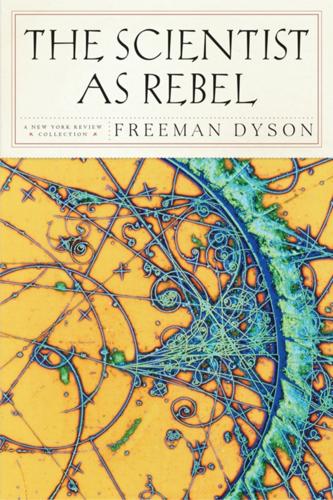
The Scientist as Rebel
by
Freeman Dyson
Published 1 Jan 2006
The day after his arrival, he died suddenly of a pulmonary embolism on the steps of the Royal Institute of Technology in Stockholm. Dark Hero of the Information Age5 is the third biography of Norbert Wiener, unless there are others of which I am ignorant. First came a joint biography of Wiener and the mathematician John von Neumann, John von Neumann and Norbert Wiener: From Mathematics to the Technologies of Life and Death, by Steve Heims in 1980.6 Then came Norbert Wiener, 1894–1964, by Pesi Masani in 1990.7 The main justification for a new biography is that the three biographies emphasize different aspects of Wiener’s life and character. The Heims biography emphasizes politics. It is mainly concerned with Wiener’s activities as a social critic in the last third of his life.
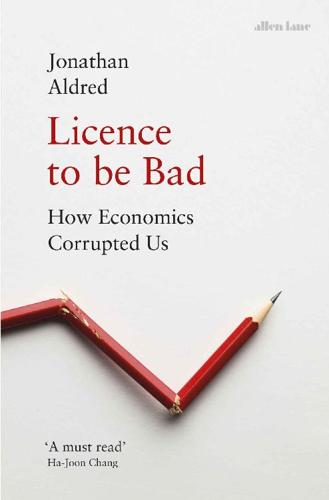
Licence to be Bad
by
Jonathan Aldred
Published 5 Jun 2019
Quoted in Leonard, Robert J. (1995), ‘From Parlor Games to Social Science: Von Neumann, Morgenstern, and the Creation of Game Theory 1928–1944’, Journal of Economic Literature, 33 (2), 730. 8 Nasar, 94. 9 Ibid. 10 Quoted in Heims, S. (1980). John Von Neumann and Norbert Wiener: From Mathematics to the Technologies of Life and Death (Cambridge: MIT Press), 327. 11 Quoted in Poundstone, W. (1992), Prisoner’s Dilemma (New York: Anchor Books), 168. 12 Quoted in Ferguson, N. (2017), The Square and the Tower: Networks and Power, from the Freemasons to Facebook (London: Allen Lane), 260. 13 Hertzberg, H. (2001), ‘Comment: Tuesday, and After’, New Yorker, 24 September 2001, 27.

Machines of Loving Grace: The Quest for Common Ground Between Humans and Robots
by
John Markoff
Published 24 Aug 2015
pagewanted=all. 12.Ibid. 13.Ibid. 14.Carew, Walter Reuther, 144. 15.The Ad Hoc Committee on the Triple Revolution, “The Triple Revolution,” Liberation, April 1964, http://www.educationanddemocracy.org/FSCfiles/C_CC2a_TripleRevolution.htm. 16.Mark D. Stahlman, “Wiener’s Genius Project” (invited paper, IEEE 2014 Conference on Norbert Wiener in the 21st Century, 2014). 17.Steve J. Heims, John von Neumann and Norbert Wiener: From Mathematics to the Technologies of Life and Death (Cambridge, MA: MIT Press, 1980), 343. 18.Norbert Wiener, God and Golem, Inc.: A Comment on Certain Points where Cybernetics Impinges on Religion (Cambridge, MA: MIT Press, 1964), 29. 19.“Machines Smarter Than Men? Interview with Dr. Norbert Wiener, Noted Scientist,” U.S.

Between Human and Machine: Feedback, Control, and Computing Before Cybernetics
by
David A. Mindell
Published 10 Oct 2002
The Radiance of France: Nuclear Power and National Identity after World War II . Cambridge: MIT Press, 1998. Heims, Steve J. Constructing a Social Science for Postwar America: The Cybernetics Group, 1946–1953 . Cambridge: MIT Press, 1993. ———. John von Neumann and Norbert Wiener: From Mathematics to the Technologies of Life and Death . Cambridge: MIT Press, 1980 . Hewlett, E. M. “The Selsyn System of Position Indication.” General Electric Review 24 (March 1921): 210–18. Hochheiser, Sheldon. “What Makes the Picture Talk: AT&T and the Development of Sound Motion Picture Technology.” IEEE Transactions on Education 35 (November 1992): 278–85.
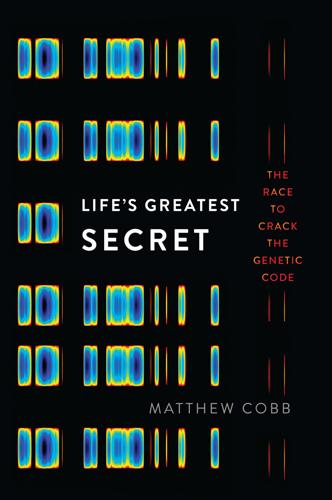
Life's Greatest Secret: The Race to Crack the Genetic Code
by
Matthew Cobb
Published 6 Jul 2015
Heijmans, B. T., Tobi, E. W., Stein, A. D. et al., ‘Persistent epigenetic differences associated with prenatal exposure to famine in humans’, Proceedings of the National Academy of Sciences USA, vol. 105, 2008, pp. 17046–9. Heims, S. J., John von Neumann & Norbert Weiner: From Mathematics to the Technologies of Life and Death, London, MIT Press, 1980. Heims, S. J., The Cybernetics Group, London, MIT Press, 1991. Henikoff, S., Keene, M. A., Fechtel, K. and Fristrom, J. W., ‘Gene within a gene: nested Drosophila genes encode unrelated proteins on opposite DNA strands’, Cell, vol. 44, 1986, pp. 33–42.
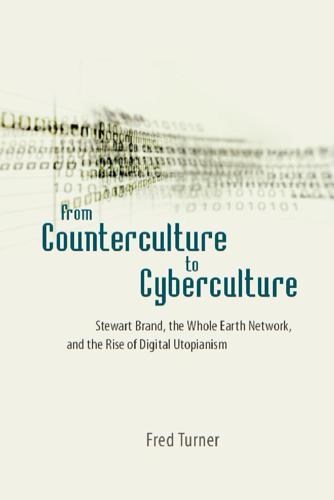
From Counterculture to Cyberculture: Stewart Brand, the Whole Earth Network, and the Rise of Digital Utopianism
by
Fred Turner
Published 31 Aug 2006
Constructing a Social Science for Post-War America: The Cybernetics Group, 1946 –1953. Cambridge, MA: MIT Press, 1991. ———. “Gregory Bateson and the Mathematicians: From Interdisciplinary Interaction to Societal Functions.” Journal of the History of the Behavioral Sciences 13 (1977): 141–59. ———. John Von Neumann and Norbert Wiener: From Mathematics to the Technologies of Life and Death. Cambridge, MA: MIT Press, 1980. Helmreich, Stefan. “Artificial Life, Inc.: Darwin and Commodity Fetishism from Santa Fe to Silicon Valley.” Science as Culture 10, no. 4 (2001): 483 –504. ———. Silicon Second Nature: Culturing Artificial Life in a Digital World. Berkeley: University of California Press, 2000.